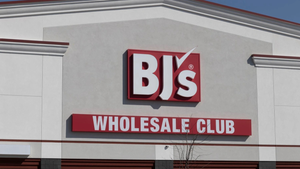August grocery sales climb 7% YOY to $9.9BAugust grocery sales climb 7% YOY to $9.9B
Three consecutive months of year-over-year online sales growth reflect the impact of recent subscription/membership promotions
September 16, 2024

The U.S. online grocery market ended August with $9.9 billion in monthly sales, a 7% increase over last year as all three fulfillment methods posted year-over-year sales growth according to the most recent Brick Meets Click/Mercatus Grocery Shopper Survey fielded August 30-31. August also marked the third straight month of high-single-digit sales gains for online grocery in 2024, primarily driven by strong promotional efforts for subscription and membership programs that started in May.
While each fulfillment method grew, delivery contributed more than half of the overall sales gains for the month, increasing 10.2% versus last year to $3.9 billion, propelled by a continued surge in the number of monthly active users (MAUs). Ship-to-home accounted for over one-fifth of the sales gains, climbing 8.9% year over year to $1.8 billion as significantly higher average order values (AOV) more than offset flat MAU growth and a drop in order frequency. Pickup finished the month up 3.5% to $4.3 billion as moderate MAU expansion countered a pullback in order frequency and AOV finished up by 3.5% compared to last year.
Compared to August 2023, delivery and Walmart are the primary beneficiaries of the various promotional activities and have experienced larger gains in their respective MAU bases than the general trend. While the MAU base for overall online grocery sales grew by 6% year over year in August, delivery’s MAU base expanded by nearly 16% (almost three times faster than pickup’s MAU base), and Walmart’s MAU base expanded by approximately 9% year over year.
“Achieving growth will only get more challenging for grocers that don’t have a competitive offering or ways to offset the discounts,” said David Bishop, partner at Brick Meets Click. “Converting a customer into a member/subscriber motivates them to buy more frequently, especially given that most firms are promoting ‘free’ delivery. Even though there’s a cost to join, explicit fees are an on-going source of friction that many shoppers want to avoid.”
As background, the special offers and promotions made by a variety of players over the past several months have mainly focused on delivery services. Beginning in May 2024, Instacart offered 80% off its annual membership. Walmart followed shortly after and promoted a 50% discount on its membership program. Then, in July and August, Walmart, and other competitors such as Amazon and SpartanNash featured similar deals, with some offers targeting specific segments like students and teachers for the back-to-school season.
In the three-month period following the start of the promotions (June – August), total online grocery sales growth accelerated, increasing to 7.9% year over year compared to 1.4% year over year for the preceding three-month period (March – May). The difference in sales growth between the two periods equates to a 650-bps gain; however, the incremental impact is likely closer to 220 bps after accounting for the effect of seasonality which Brick Meets Click estimated based on monthly online grocery sales over the last four years.
The specific impact on delivery has been even more dramatic. Compared to last year, delivery sales grew by 16.1% during the June – August 2024 period versus just 0.6% during the March – May 2024 period. The main growth drivers between the two three month periods included expansion of delivery’s MAU base, which increased by 13.9% year over year during June - August versus 4.6% during March – May, and skyrocketing order frequency, which climbed 14.9% year over year versus a decline of 2.2% in the prior three month period.
For Walmart, the positive impact of the promotions likely extends beyond online sales. The share of U.S. households that primarily shop for groceries at Walmart, either in-store or online, increased to approximately 30% in June – August 2024, up by 130 bps versus March – May 2024. Households that chose Walmart as their primary grocery retailer were already more likely to buy groceries online, and now the difference between Walmart and supermarkets has widened even further on that metric. And, when households buy groceries online, Walmart’s primary customers are increasingly likely to do so from Walmart as well.
“We know regional grocers are facing increased competition from retail giants like Walmart and Amazon, who can leverage huge pools of CPG ad monies to sustain aggressive promotions and capture more share of the online business,” said Mark Fairhurst, chief growth officer at Mercatus. “Regional grocers should play to their strengths in fresh foods, private label, and convenient locations while investing in targeted promotions that resonate with existing customers. Creating stronger customer connections via relevant, personalized engagement is vital for building loyalty and competing digitally today.”
About this research
The Brick Meets Click/Mercatus Grocery Shopping Survey is an ongoing independent research initiative created and conducted by the team at Brick Meets Click and sponsored by Mercatus.
Brick Meets Click conducted the most recent survey on August 30-31, 2024, with 1,829 adults, 18 years and older, who participated in the household’s grocery shopping, and a similar survey in August 2023 (n=1,704). Results are adjusted based on internet usage among U.S. adults to account for the non-response bias associated with online surveys. Responses are geographically representative of the U.S. and weighted by age to reflect the national population of adults, 18 years and older, according to the U.S. Census Bureau.
The three receiving methods for online grocery orders are defined as follows:
Delivery includes orders received from a first- or third-party provider like Instacart, Shipt or the retailer’s own employees.
Pickup includes orders that are received by customers either inside or outside a store or at a designated location/locker.
Ship-to-Home includes orders that are received via common or contract carriers like FedEx, UPS, USPS, etc.
About the Author
You May Also Like






